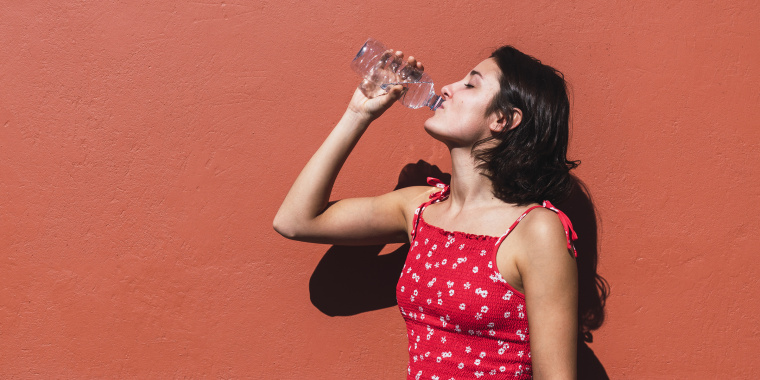An estimated one in 10 Americans will suffer from a kidney stone at some point, according to the National Kidney Foundation. Kidney stones can be very painful, but if you do wind up with one, you may be able to manage it with at-home remedies. Here are some prevention pointers as well as some information about how to treat kidney stones at home on your own.
What are kidney stones?
Your kidneys function to filter out waste material and excess fluid in your urine. A kidney stone forms when certain chemical waste matter builds up and there isn’t enough fluid to filter it out properly. When this happens, the chemicals crystalize and eventually form a stone that can continue to get larger unless it’s passed out of the body through urine. Very small stones (about the size of a grain of salt) may be passed without difficulty, but larger stones (pebble-sized) can cause significant pain as they move through the narrow vessels where urine flows out of the kidneys. If a kidney stone becomes too large, it can lead to a blockage of these vessels and prevent urine from flowing.
What are the symptoms of a kidney stone?
While some people hardly notice tiny stones, a larger kidney stone may induce excruciating pain in your back, side or the lower part of your belly. Some people experience fluctuating pain that’s sharp at one moment and tolerable the next. Other symptoms include burning when you urinate and irregular urine color (red, pink or brown) or odor. Nausea, vomiting and fever can also be signs of a kidney stone.
How are kidney stones diagnosed?
If you think you may have a kidney stone, it’s a good idea to see a doctor right away. Your doctor may want to run blood, urine and imaging tests to detect a kidney stone and rule out other possible causes of your pain. You may also be asked to collect stones that you pass in order for them to be analyzed. This process helps your doctor pinpoint the type of stones that you have, which can not only help inform your treatment but also your plan to prevent future stones.
At-home remedies for kidney stones
If you're experiencing pain, you'll want to know how to pass kidney stones fast. Larger stones are likely to need medical treatment. They either need to be broken down so they’re small enough to pass through your urinary tract or be surgically removed. Smaller stones, however, can be passed without such interventions. If your doctor suggests at-home treatment for kidney stones, the best thing to do is drink plenty of water. Drinking extra fluid will help prevent the stone from growing larger and becoming more troublesome. It’ll also help signal your body to urinate, so the stone can pass through your urine. Since kidney stones cause pain, you can also try an over-the-counter pain reliever, such as ibuprofen or acetaminophen. (Just be sure to use these medications as directed.)
How to prevent kidney stones
Certain kidney stone prevention recommendations are targeted to the type of kidney stone you’ve had, but there are general diet and lifestyle habits that can reduce the overall risk.
- Drink plenty of fluids. Stones are less likely to form when you’re adequately hydrated. You’ll know you’re hydrated when your urine is pale yellow or clear, but the National Kidney Foundation suggests aiming for 8 to 12 cups of water per day. Additionally, be sure to replenish any fluid that you’re losing through your sweat. If you’re participating in intense workout sessions or spending time outside when it’s hot, make sure you’re rehydrating sufficiently.
- Watch your sodium intake. The majority of Americans eat more than the suggested sodium cap of 2,300 milligrams per day. Most of the sodium in your diet comes from packaged foods, even healthy ones, like whole grain cereals and breads. Excessive sodium in your diet can increase the odds of a kidney stone, so limit sources like fast foods and restaurant meals and sodium-heavy packaged foods. It’s easier to reduce your sodium intake when you focus on eating more whole or minimally processed foods.
- Embrace a plant-forward diet. Animal proteins can contribute to the formation of kidney stones. To lower the odds, try making a mix of plant-based foods — such as vegetables, fruits and whole grains — the focus of your meals and eat animal proteins less frequently and in smaller portions. Plant-based proteins, such as pulses (beans, legumes and peas), can be swapped for meat at meals or they can be served alongside smaller portions of animal proteins.
- Get your calcium from food. The most common type of kidney stone is called a calcium stone. Calcium from food sources can actually help you prevent this type of kidney stone from forming. In fact, a low calcium intake is linked to an increased risk of these stones.
- Be smart with supplements. While a calcium-rich diet may help you prevent kidney stones from forming, calcium supplements are linked with an increased risk.
4 tips for staying hydrated
Since staying hydrated is a top treatment and prevention strategy, consider these tips to help you increase your water intake.
- Set a phone reminder. If you rarely remember to drink water, use your digital device to remind you.
- Park a water bottle on your desk. Keep a water bottle front and center as a reminder to drink up. It’s helpful to think of your day in parts — say before and after lunch. Try to drink a bottle in each of these time windows.
- Infuse it with flavor. If water seems boring, liven it up with a splash of 100 percent orange juice or some juice- or fruit-filled ice cubes.
- Eat water-rich foods. Foods — like melon, grapes, tomatoes and cucumbers — provide some water to help you meet your fluid needs.

